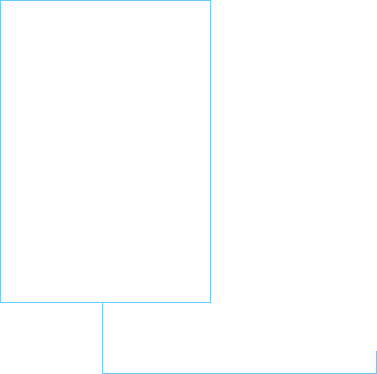


| The greatest single source of American illustrations of Commodore Perry’s
expedition is the official Narrative published between 1856 and 1858. Most of these graphics were done by William Heine, a young German-born artist recruited to record the mission. His original watercolors were reproduced as lithographs. It is largely through his eyes that we see the journey of the Perry mission unfold. |
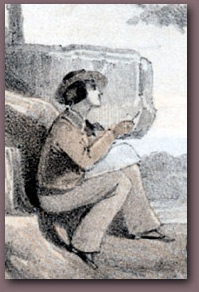
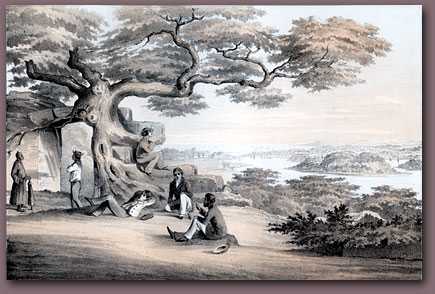
| Heine brought a gentle, panoramic, romantic realism to his subjects. (Note the artist at work beneath the tree.) |
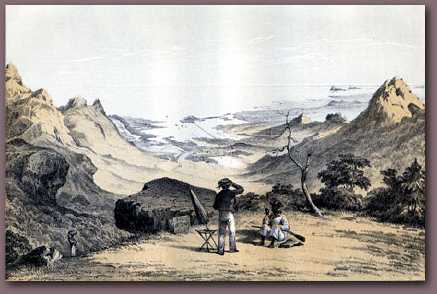
| So enraptured was Heine by the new landscapes and cultures that he placed himself in more than one of his works. |
| The artwork in the Narrative begins with impressions of ports of call en route to Japan... |
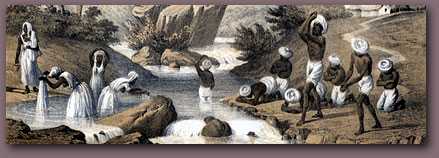
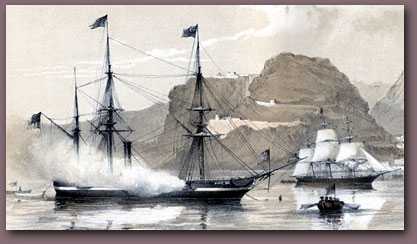
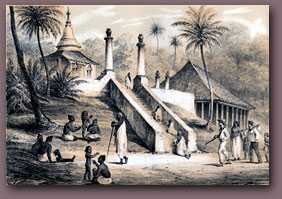
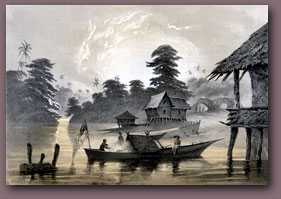
| including St. Helena Island, Ceylon, Mauritius, Singapore. |
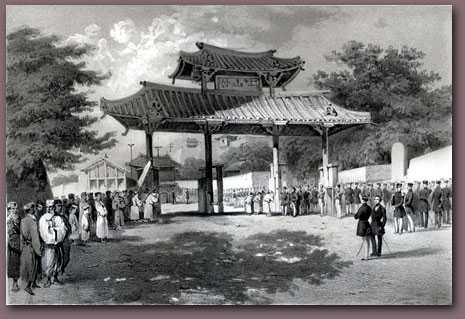
| In Okinawa, Perry and his entourage paused by the imposing “Gate of Courtesy” in Naha... |
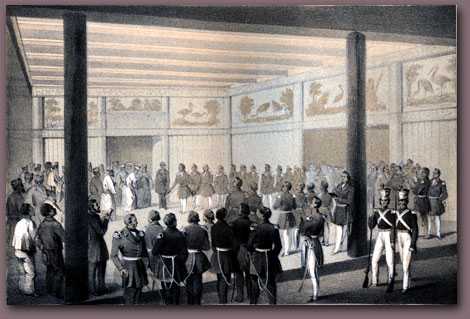
| ...before attending a crowded formal reception at the Castle of Shui. (Notice the two artists leaning against the pillars, sketching.) |
| These first encounters were not without tense
moments. The Japanese, after all, had lived under a policy of strict seclusion
for more than 200 years. When the Americans brazenly began to survey Edo Bay... |
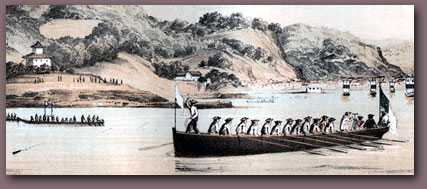
| they were challenged by the Japanese in small boats. |
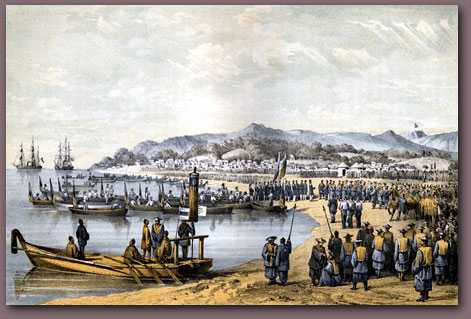
| The Commodore went ashore with great pomp and ceremony to present his demands to the Shogun’s officials, who had gathered onshore near the then little town of Yokohama. |
| Thereafter, all becomes decorous again. |
| Perry delivered President Fillmore’s letter requesting the end of the policy of seclusion and announced that he would return shortly, with a larger squadron, for the government’s answer. |
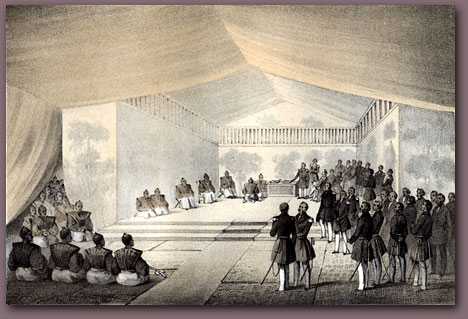
| Three days later, the four American vessels weighed anchor
and left. Perry made good on his heavy-handed promise some eight months later, this time arriving in early March of 1854 with a fleet that had more than doubled to nine ships. Upon landing in Yokohama on March 8, 1854, Perry’s troops stood in formal parade before a horizon prickled with the masts of the black ships... |
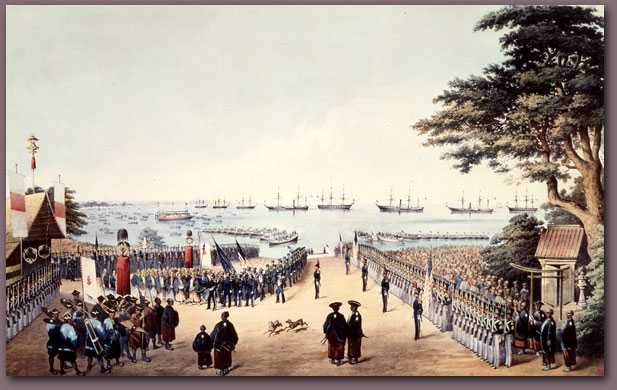
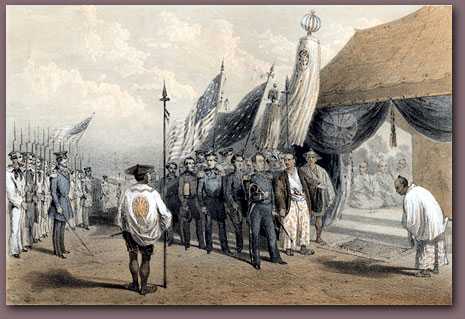
| The Commodore was solemnly welcomed by the Shogun’s representatives. |
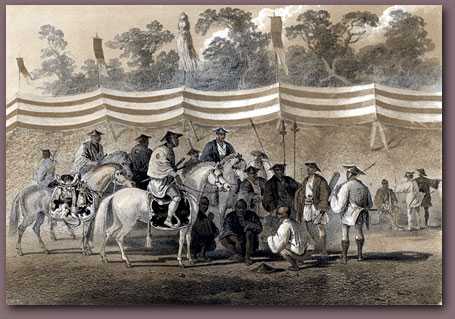
| As during Perry’s previous visit, thousands of samurai
mobilized, but again diplomacy prevailed. |
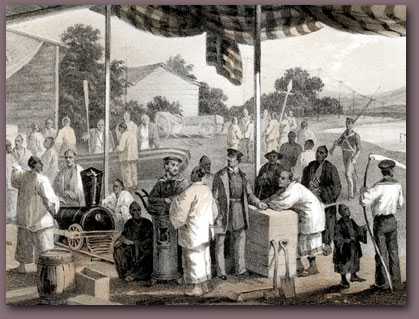
| Perry’s second visit (1854) lasted for several months and provided occasion for more intimate and extensive encounters. Formal occasions included the presentation of gifts... |
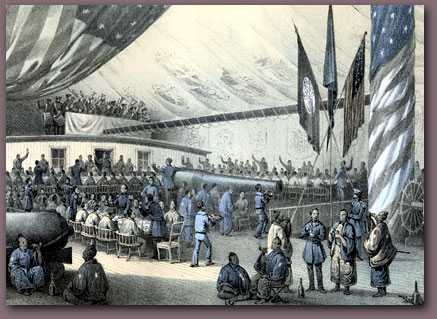
| ...a banquet on Perry’s flagship Powhatan... |
| ...military exercises at Ryosenji Temple in Shimoda... |
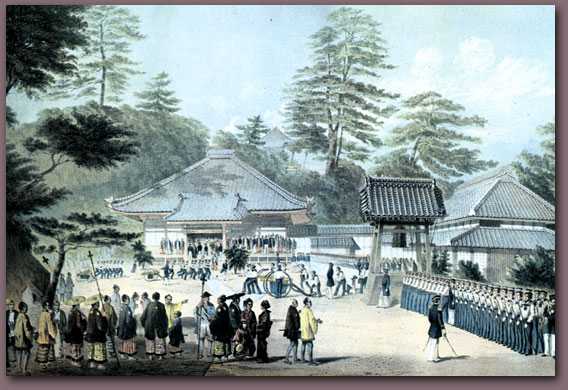
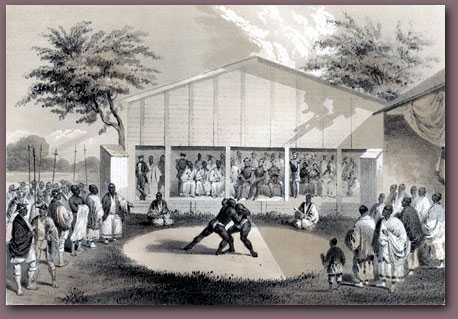
| ...a demonstration of sumo wrestling... |
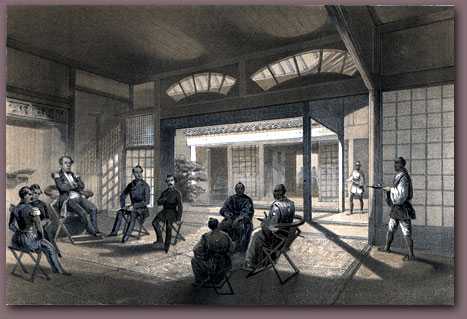
| ...and meetings with local Japanese officials. |
The high point of these activities was a treaty signed on
March 31, 1854 in Kanagawa which met all of the U.S. government’s
requests. 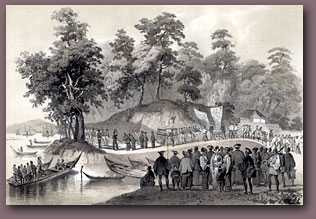 Perry paid a farewell
visit to the new treaty port of Shimoda in early June 1854. Perry paid a farewell
visit to the new treaty port of Shimoda in early June 1854. Treaties between Japan and other foreign powers soon followed. On all sides — whether facing “East” or facing “West”— the experience was profound. Whole new worlds became engaged in unprecedented ways. |

| Heine’s luminous illustration captures the moonlit
graveyard at Ryosenji Temple. In all, four Americans with the Perry mission died and were buried in Japan. |
|
Lithographs based on watercolors and drawings by William Heine, W. T.
Peters, and daguerreotypes by Eliphalet M. Brown. From Francis L. Hawks’
Narrative of the Expedition of an American Squadron to the China Seas
and Japan, Performed in the Years 1852, 1853, and 1854, under the Command
of Commodore M. C. Perry, United States Navy, by Order of the Government
of the United States. Vol. 1. Washington, D. C., 1856. “Passing the Rubicon”: Japanese officials confront the surveying party (detail),The White House Collection. The Landing at Kurihama (detail). The Landing at Yokohama, Yokohama Archives of History. Perry’s troops in formation at Ryosenji Temple, Shimoda, US Naval Academy Museum. Moonlit graveyard at Ryosenji Temple, Shimoda, Harvard University Library. On viewing images from the historical record: click here. Black Ships & Samurai © 2008 Massachusetts Institute of Technology A project of professors John W. Dower & Shigeru Miyagawa Design and production by Ellen Sebring, Scott Shunk, and Andrew Burstein |
